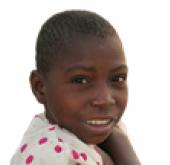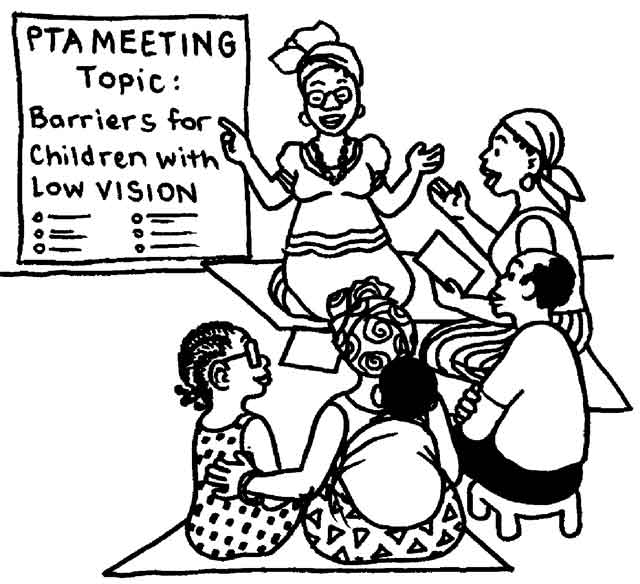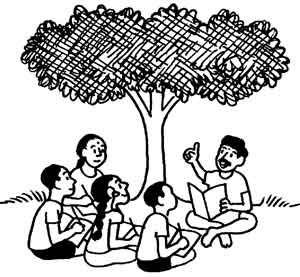Your progress
0%
The activities below can help you support children with disabilities in accessing primary education:

Use your mouse or keyboard to expand each of the activity headings below. To add an activity to your action plan, select the Add button beside it. Once you have added an activity to your action plan, select Action plan > My action plan from the menu above to complete that activity.

The situation regarding primary education is different in each community. Some local primary schools may be supportive of inclusive education, while others may not be. Sometimes there may be no primary school at all. Some communities may have a tradition of sending children with disabilities away to special schools or special units.
Whatever the situation, an important starting point is to raise awareness about inclusive education in the communities and gain their support.
Learn about how Swaziland’s Ministry of Health’s involved children with disabilities in raising awareness and creating a more accessible environment.


In Swaziland, the Ministry of Health’s CBR encourages child-to-child activities to empower and educate children about disability issues. Children compose songs and perform plays, raising awareness in the school and community. They cover issues such as road safety, HIV/AIDS and disability. They also help to build ramps, make toilets accessible and design playground equipment.
CBR personnel can have a major role in supporting and involving families in the process of enabling the local school to be inclusive. Teachers often need to learn that parents are partners in education.
Learn about how parents partnered closely with teachers in Lesotho to promote inclusive education.
Learn about how the CBR programme helped Chetna and her family attain a new life.


In Lesotho, parents collaborated closely with teachers to promote inclusive education as “equal partners” with the teachers. The parents’ contributions include:
Parent trainers and parent resource persons work with schools and with key groups such as the National Federation of People with Disabilities. Parents also feel they have gained from the programme and become more aware of their children’s needs. They feel their confidence is increased and they are more empowered.
Many children with disabilities are prevented from accessing primary education because of poor health status and environmental barriers, such as large distances between home and school and inaccessible public transport facilities. Improvements in health and physical access can be achieved with appropriate medical care, rehabilitation and assistive devices (see Health module). CBR needs to ensure that children can access these services – it is often the first step to enabling children with disabilities to get out of their house, reach school and access primary education.
Learn about how one young boy’s classmates supported him in accessing school.


Blaise lives in a slum in Nairobi, Kenya. He was born with spina bifida, which resulted in paralysis of both his legs, and loss of bladder and bowel control. Blaise remained at home until the CBR of the Association for the Physically Disabled of Kenya made contact with him. They helped him access much-needed surgery, provided rehabilitation, and enrolled him in a local primary school which had over 1000 students.
In his early days at school, Blaise’s playmates would carry Blaise to school and back home every morning and evening on their backs, and even change his diapers while at school. The environmental conditions did not deter Blaise from going to school. His neighbours were supportive after learning that his condition was not infectious and would not cause them any harm. Currently, Blaise is in class seven and now goes to school using a tricycle provided by the CBR. He has also been trained in self-catheterization. There are always friends around to give him a helping hand when he needs one. He is performing well academically, and dreams of becoming a doctor when he grows up.
This refers to all the activities and approaches that need to be in place so that all children have the opportunity and support they need to achieve their highest potential. There are multiple ways to help create a learning environment for inclusive primary education, which follow this recommended approach:
Learn about how teachers in El Salvador prioritized inclusion and inspired the entire country to action.


In El Salvador, CBR prioritized the issue of school dropouts, repeaters, and children who were labelled as “bad performers”. CBR personnel and volunteer students from secondary schools started working with these children in the afternoons using learner-centred methods, including games. After a year, teachers became aware of the positive results and were convinced that inclusion worked when the teaching style was more appropriate. CBR then offered training to the teachers, and paid an itinerant teacher to offer support. The school established the first inclusive system in the country and attracted the attention of the Ministry of Education through a publication about its work. The Ministry eventually paid the salary of three itinerant teachers to support inclusion throughout primary schools in the district.

Often there are resources and services already in or around the community that are not fully used, or that could be extended to provide additional support for children, parents and teachers. Doing this involves creating an effective learning environment for all children by using locally available resources and ensuring the accessibility of specialist resources that some children with disabilities require in order to participate and learn.
CBR can do this by:
Learn about how teachers in El Salvador prioritized inclusion and inspired the entire country to action.


In Zambia, small units (individual buildings or make-shift structures each containing a single classroom) once created a segregated environment, where the teachers in the units were called “teachers of the fools”. When the school really started to address dropout and repeater rates, child rights, democracy in the classroom and inclusion, the small unit was transformed into a resource room for all children and teachers.

Children from extremely poor families are among those most excluded from primary education, and children with disabilities are usually members of these families. However, while poverty is a significant barrier to primary education, experience shows that negative attitudes are a much bigger barrier to inclusion than poverty. Sometimes inclusion is more successful in poor communities, because people are accustomed to overcoming difficulties, working together and looking after one another.
Learn about one family’s reasons for not sending their child with disabilities to school.


A CBR worker in India asked a mother of an eight-year-old child with a hearing impairment: “why don’t you send your child to the primary school at the self-help centre? It’s very near your house?”
The mother replied: “My son has a lot to do. I need him to take the goats out to graze. I can only send him when he has no work to do at home”.
To promote inclusive education, the education sector must undergo transformative changes at community, district and national levels. Inclusion will not be sustainable without supportive policies, budgets, structures and managers. CBR can help by networking and creating alliances, lobbying groups and partnerships with:
Learn about how a teacher in Zambia realized that students were wrongly placed in a special unit and addressed this.
Learn about how a teacher in Zambia realized that students were wrongly placed in a special unit and addressed this.


A teacher in Zambia read a copy of an Enabling Education Network newsletter and realized that children in a special unit at her school were wrongly placed. “I placed them in regular classes and they did extremely well … the newsletter opened my mind. We had regarded these pupils as children who cannot cope”. The teacher uses the newsletter and the success of pupils transferred to regular classes to convince other teachers who believe that children with disabilities cannot cope.